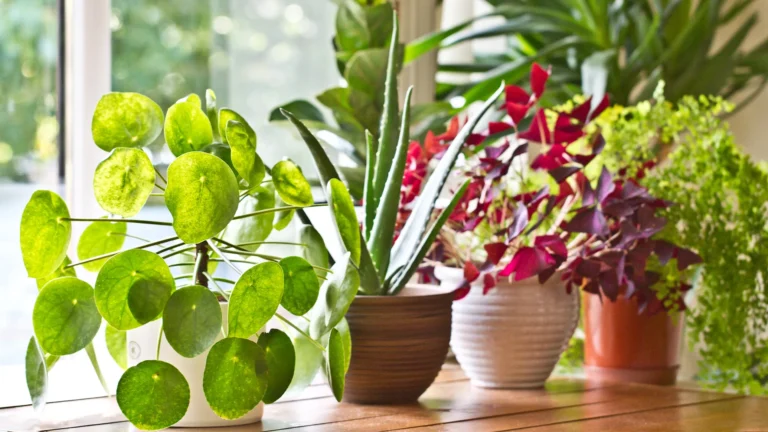Contents
Introduction
Starting a plant journey can feel a bit daunting, especially if you’ve never had a green thumb before. But don’t worry! Choosing the right plants can make all the difference, and that’s where hardy plants come in. These tough little survivors are perfect for beginners because they can withstand a bit of neglect and still thrive.
Why Choosing Hardy Plants Matters
So, what exactly makes a plant “hardy”? Simply put, hardy plants are the superheroes of the plant world. They can tolerate a range of conditions that might make more delicate plants wilt and wither. Whether you forget to water them, don’t get enough sunlight in your apartment, or have a busy schedule, hardy plants can handle it all.
For beginners, starting with hardy plants is a game-changer. They’re forgiving, low-maintenance, and often quite resilient against pests and diseases. This means you can enjoy the beauty and benefits of having plants without the stress of constant upkeep.
Ease of Care
One of the biggest hurdles for new plant parents is figuring out how to care for their green babies. Hardy plants make this a breeze. They don’t need you to be a plant expert or have a rigorous care routine. In fact, many hardy plants prefer you leave them alone most of the time!
These plants are perfect for people who want to dip their toes into the world of gardening without diving into the deep end. With hardy plants, you’ll spend less time worrying about watering schedules, soil types, or light conditions and more time enjoying the natural beauty they bring to your space.
Starting with these easy-care plants can build your confidence and help you develop a love for gardening. Plus, once you’ve got the hang of caring for these tough guys, you’ll be ready to expand your plant family and take on more challenging varieties.
So, let’s dive into the world of hardy plants and discover five of the best options for beginners. These plants are not only beautiful but also incredibly easy to care for, making them the perfect starting point for any budding plant enthusiast.
Snake Plant (Sansevieria)
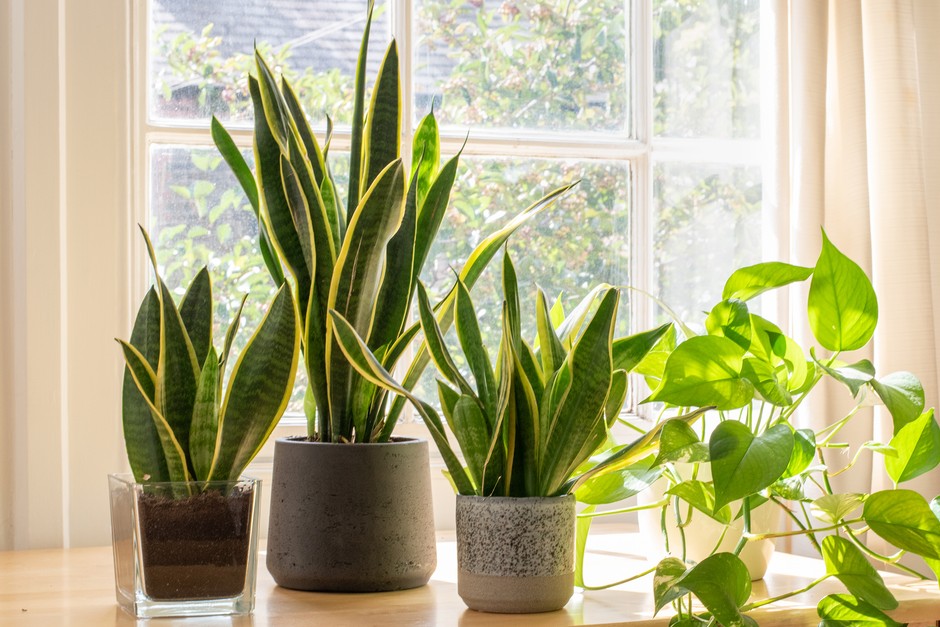
Description and Origin
Meet the snake plant, also known as Sansevieria or mother-in-law’s tongue. This plant is a popular choice for both new and experienced plant parents. Originating from West Africa, snake plants are known for their tall, upright leaves that can be either solid green or adorned with striking variegated patterns. They’re not just pretty to look at; they’re also incredibly sturdy and easy to care for.
Care Requirements
Taking care of a snake plant is a breeze, making it a top pick for beginners.
- Light: One of the best things about snake plants is their adaptability to different light conditions. They thrive in bright, indirect light but can also tolerate low light levels. This makes them perfect for any room in your home, whether it’s a sunny living room or a dimly lit hallway.
- Water: If you’re prone to forgetting to water your plants, the snake plant is your best friend. They prefer to be watered sparingly, only when the soil is completely dry. Overwatering can lead to root rot, so it’s better to underwater than overdo it.
- Soil: Snake plants aren’t too picky about soil, but they do best in well-draining soil. A cactus or succulent mix works great. Make sure your pot has drainage holes to prevent water from sitting at the bottom.
Benefits and Uses
Snake plants aren’t just low-maintenance; they also come with a host of benefits.
- Air-Purifying Qualities: These plants are fantastic at purifying the air. They can remove toxins like formaldehyde and benzene, making your indoor environment healthier.
- Ideal for Indoor Environments: Snake plants are incredibly versatile and can thrive in a variety of indoor settings. They’re perfect for apartments, offices, and homes of all sizes.
Common Issues and Solutions
Even though snake plants are tough, they can sometimes face a few issues.
- Overwatering Risks: The most common problem with snake plants is overwatering, which can cause root rot. To avoid this, let the soil dry out completely between waterings. If you notice the leaves becoming mushy or discolored, cut back on watering and ensure proper drainage.
- Tips to Prevent and Treat Root Rot: If you suspect root rot, remove the plant from its pot, trim away any rotting roots, and repot it in fresh, well-draining soil. Be sure to water it sparingly moving forward.
Snake plants are a fantastic choice for anyone looking to start their plant journey. With their striking appearance, easy care requirements, and air-purifying qualities, they’re a perfect addition to any home. So, if you’re a beginner, give the snake plant a try—you won’t be disappointed!
Spider Plant (Chlorophytum comosum)
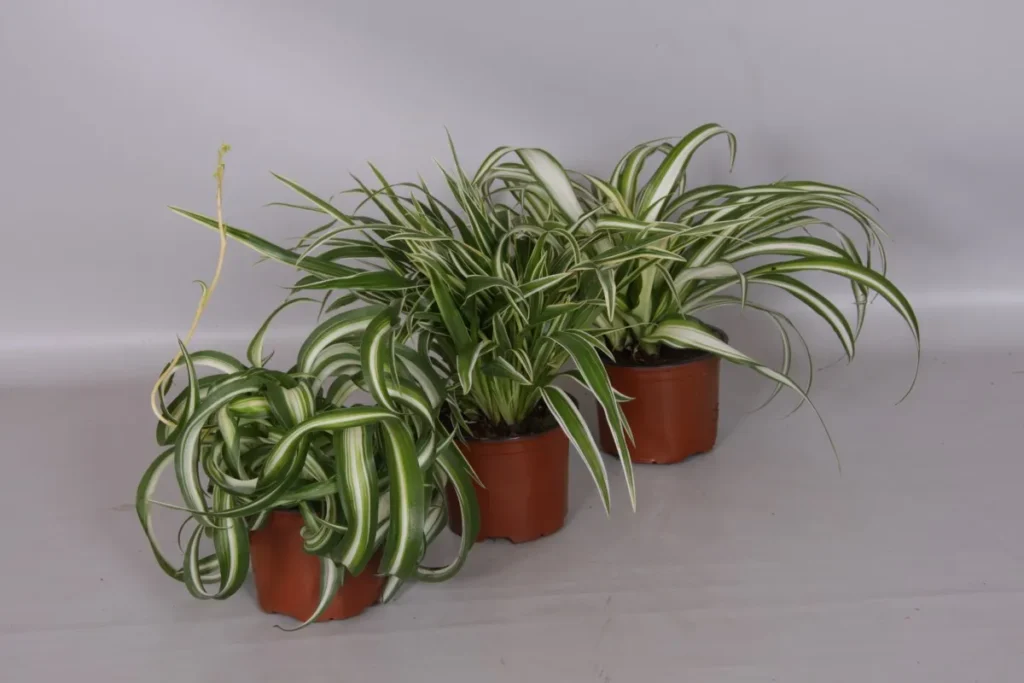
Description and Origin
The spider plant, also known as Chlorophytum comosum, is another top pick for beginners. Native to South Africa, this plant is known for its long, arching leaves that are usually green with white or yellow stripes. Spider plants are not only attractive but also incredibly easy to grow, making them a favorite for many plant enthusiasts.
Care Requirements
Spider plants are low-maintenance and forgiving, making them perfect for those new to plant care.
- Light: Spider plants thrive in bright, indirect light but are also quite adaptable to lower light conditions. They’ll do well in a spot where they can get some sunlight but are protected from direct, harsh rays.
- Water: These plants like their soil to be kept consistently moist but not soggy. Water them when the top inch of soil feels dry. They’re quite forgiving if you forget a watering or two, making them ideal for busy or forgetful plant parents.
- Soil: Spider plants aren’t too fussy about soil but prefer a well-draining potting mix. A general-purpose potting soil works just fine. Ensure your pot has drainage holes to prevent water from pooling at the bottom.
Benefits and Uses
Spider plants bring several benefits to your indoor space.
- Air Purification Abilities: Like snake plants, spider plants are excellent at purifying the air. They can help remove harmful substances like formaldehyde and xylene, making your home healthier.
- Easy Propagation Through Offsets: One of the coolest things about spider plants is how easy they are to propagate. They produce little “baby” plants, or offsets, that you can easily separate and pot up to create new plants. This makes them great for sharing with friends or expanding your plant collection.
Common Issues and Solutions
Even hardy plants like spider plants can have their issues, but they’re easy to manage.
- Brown Tips on Leaves: A common issue with spider plants is browning tips on the leaves. This can be caused by several factors, including fluoride in tap water, low humidity, or over-fertilizing. To remedy this, try using distilled water or letting tap water sit out overnight before using it. Increasing humidity around the plant can also help.
- Proper Watering and Humidity Control: Ensure you’re not over or under-watering your spider plant. Keeping the soil evenly moist and maintaining good humidity levels can prevent most issues. If the air in your home is very dry, consider misting the plant or placing a humidifier nearby.
Spider plants are an excellent choice for beginners due to their resilience and attractive appearance. With their easy care requirements and ability to purify the air, they make a wonderful addition to any home. Plus, their easy propagation means you can enjoy even more of these lovely plants with minimal effort. If you’re new to plant care, the spider plant is a fantastic option to start your journey.
ZZ Plant (Zamioculcas zamiifolia)
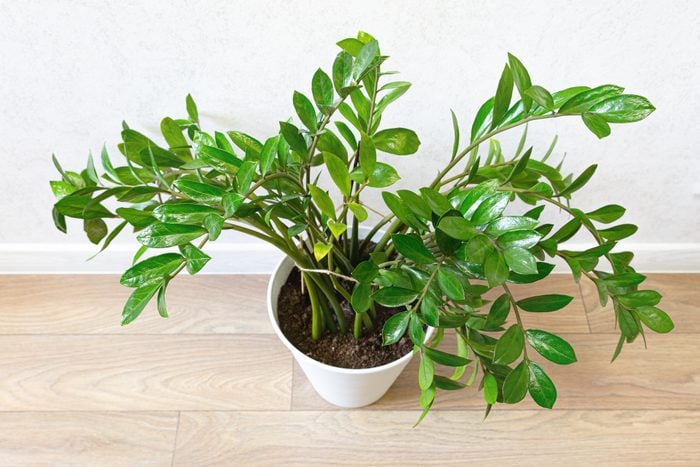
Description and Origin
The ZZ plant, short for Zamioculcas zamiifolia, is a real gem for those new to plant care. Native to Eastern Africa, the ZZ plant is known for its glossy, dark green leaves that grow in a graceful, upright manner. This plant is not only stylish but also incredibly hardy, making it a favorite among beginners and seasoned plant enthusiasts alike.
Care Requirements
The ZZ plant is famous for being nearly indestructible and very easy to care for.
- Light: ZZ plants are incredibly versatile when it comes to light conditions. They thrive in low light and can even handle bright, indirect light. This makes them perfect for offices, bedrooms, or any spot in your home that doesn’t get a lot of natural sunlight.
- Water: One of the main reasons the ZZ plant is so popular is its low water needs. These plants prefer to be on the dry side and can go weeks without watering. Water your ZZ plant when the soil is completely dry, and be careful not to overwater, as this can lead to root rot.
- Soil: ZZ plants aren’t picky about soil but do best in a well-draining mix. A standard indoor potting mix with added perlite or sand works well. Make sure your pot has drainage holes to allow excess water to escape.
Benefits and Uses
ZZ plants bring a lot of benefits to your indoor spaces, both aesthetically and practically.
- Low Maintenance: ZZ plants are ideal for busy individuals or those who might forget to water their plants regularly. Their low maintenance needs make them perfect for anyone looking to add greenery without the hassle.
- Suitable for Low-Light Environments: If your home or office doesn’t get much natural light, the ZZ plant is an excellent choice. It thrives in low-light conditions where many other plants would struggle.
Common Issues and Solutions
While ZZ plants are generally problem-free, there are a few things to watch out for.
- Yellowing Leaves Due to Overwatering: The most common issue with ZZ plants is overwatering, which can cause the leaves to turn yellow. To avoid this, ensure you’re letting the soil dry out completely between waterings. If you notice yellow leaves, cut back on watering and check the soil for proper drainage.
- Adjusting Watering Habits: If you’ve overwatered your ZZ plant, let the soil dry out and reduce the frequency of watering. Always check the soil moisture before watering to prevent overwatering in the future.
The ZZ plant is a fantastic choice for beginners due to its durability and low care requirements. With its attractive appearance and ability to thrive in low light, it’s a perfect addition to any home or office. If you’re just starting out with plants, the ZZ plant is an easy and rewarding option that will bring a touch of green to your space with minimal effort.
Pothos (Epipremnum aureum)
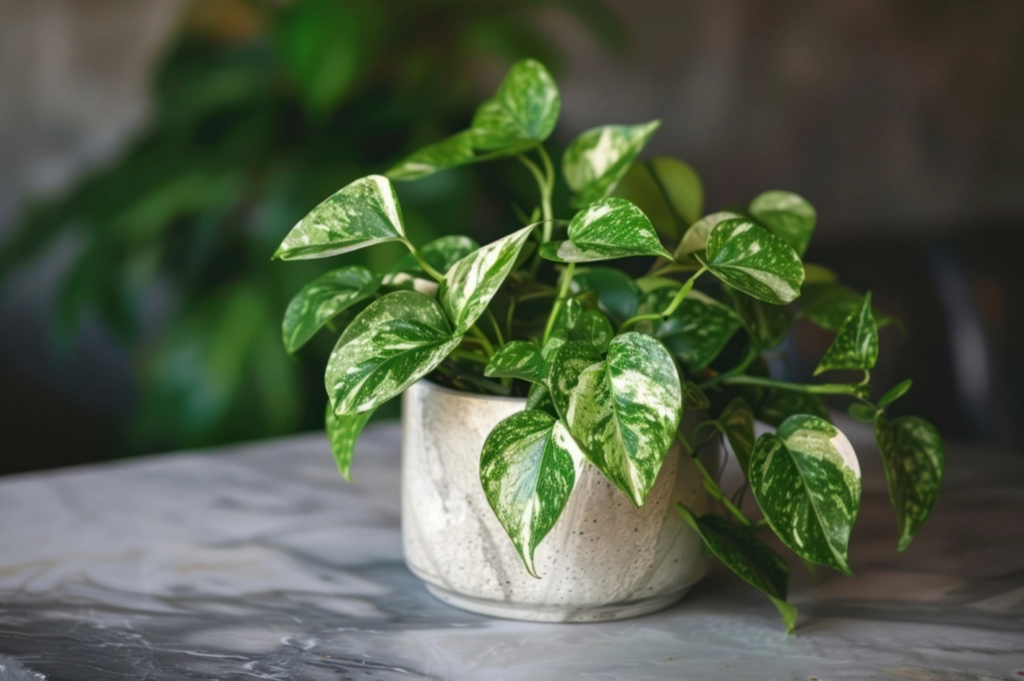
Description and Origin
Pothos, also known as Epipremnum aureum, is one of the most popular houseplants, especially among beginners. Originating from the Solomon Islands in the South Pacific, this plant is known for its heart-shaped, glossy leaves that come in a variety of colors and patterns, including golden, marble, and neon. Pothos is a versatile and hardy plant that can adapt to a wide range of indoor environments.
Care Requirements
Pothos is incredibly easy to care for, making it an ideal choice for those new to plant care.
- Light: Pothos is very adaptable when it comes to light conditions. It thrives in bright, indirect light but can also tolerate low light. This makes it perfect for almost any spot in your home, from well-lit living rooms to darker corners.
- Water: Pothos prefers its soil to dry out between waterings. Water your pothos when the top inch of soil feels dry. It’s better to underwater than overwater this plant, as it can handle some neglect but doesn’t like to sit in soggy soil.
- Soil: Pothos isn’t picky about soil, but it does best in a well-draining potting mix. A standard indoor plant potting mix with good drainage will keep your pothos happy. Ensure your pot has drainage holes to prevent water from pooling.
Benefits and Uses
Pothos offers numerous benefits, making it a great addition to any indoor space.
- Excellent for Beginners: Pothos is known for its resilience and ability to bounce back from neglect, making it an excellent plant for beginners. Its forgiving nature means you don’t have to worry too much about making mistakes.
- Versatile Placement Options: Pothos is incredibly versatile in how you can display it. It looks great trailing from a hanging basket, climbing up a trellis, or cascading over the edge of a shelf or pot. This versatility allows you to get creative with your plant displays.
Common Issues and Solutions
While pothos is generally trouble-free, it can occasionally encounter a few issues.
- Leaf Yellowing or Browning: If you notice yellow or brown leaves, it could be due to overwatering, underwatering, or low humidity. Ensure you’re allowing the soil to dry out between waterings and increase humidity if necessary by misting the plant or using a humidifier.
- Optimal Watering and Light Practices: Consistently check the soil moisture before watering to avoid overwatering. Ensure your pothos is getting the right amount of light—bright, indirect light is ideal, but it can adapt to lower light if needed.
Pothos is a fantastic choice for beginners thanks to its low maintenance and versatile growing conditions. With its attractive, trailing vines and minimal care requirements, it can easily brighten up any space. If you’re just starting out on your plant journey, pothos is a reliable and rewarding option that will thrive with just a little attention.
Aloe Vera
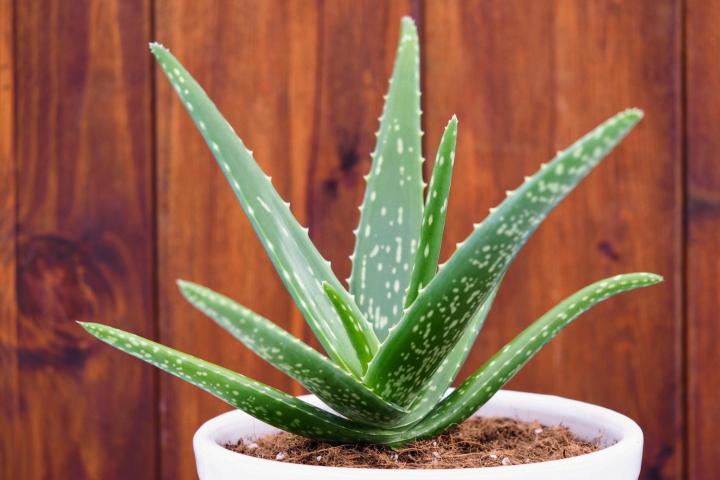
Description and Origin
Aloe vera is not just a beautiful plant but also a useful one. Originating from the Arabian Peninsula, this succulent has thick, fleshy leaves that store water, making it incredibly drought-tolerant. Aloe vera has been used for centuries for its medicinal properties, particularly in treating skin conditions. With its spiky, attractive leaves and minimal care requirements, it’s a favorite among beginners and experienced gardeners alike.
Care Requirements
Aloe vera is exceptionally easy to care for, making it a great option for those new to plant care.
- Light: Aloe vera thrives in bright, indirect sunlight. It loves a sunny spot, so placing it near a south or west-facing window is ideal. However, it can tolerate some direct sunlight, just be careful not to let it scorch in extremely hot conditions.
- Water: One of the key care tips for aloe vera is to water it sparingly. Aloe prefers its soil to dry out completely between waterings. Water your aloe vera thoroughly, then let the soil dry out before watering again. Overwatering can lead to root rot, so it’s better to underwater than overwater.
- Soil: Aloe vera needs well-draining soil to thrive. A cactus or succulent potting mix is perfect, or you can make your own by mixing regular potting soil with sand or perlite. Ensure your pot has drainage holes to prevent water from sitting at the bottom.
Benefits and Uses
Aloe vera is not only low-maintenance but also offers numerous benefits.
- Healing Properties for Skin: Aloe vera is famous for its soothing gel, which can be used to treat burns, cuts, and other skin conditions. Having an aloe vera plant at home means you have a natural remedy right at your fingertips.
- Aesthetic and Practical Addition to Home Decor: With its striking, spiky leaves, aloe vera adds a touch of greenery and style to any room. Its practical uses make it even more valuable, combining beauty and functionality in one plant.
Common Issues and Solutions
Aloe vera is generally easygoing, but there are a few issues to watch out for.
- Overwatering Concerns: The most common problem with aloe vera is overwatering, which can cause the roots to rot. To avoid this, ensure the soil dries out completely between waterings. If the leaves start to look mushy or brown, you might be overwatering.
- Ensuring Proper Drainage: Always use a pot with drainage holes and a well-draining soil mix. If you suspect root rot, remove the plant from its pot, trim away any rotted roots, and repot it in fresh, dry soil. Let the soil dry out thoroughly before watering again.
Aloe vera is a fantastic plant for beginners due to its minimal care requirements and numerous benefits. With its attractive appearance, medicinal properties, and easy care routine, it’s a wonderful addition to any home. If you’re just starting out with plants, aloe vera is a reliable and rewarding choice that will bring both beauty and practicality to your space.
Conclusion
Recap of the Top 5 Hardy Plants
We’ve journeyed through some of the most beginner-friendly plants, each with its unique charm and easy-care requirements. Let’s quickly recap the top five hardy plants that are perfect for new plant parents:
- Snake Plant (Sansevieria): Known for its striking, upright leaves and resilience, the snake plant can thrive in low light and needs infrequent watering. It’s also great for purifying the air.
- Spider Plant (Chlorophytum comosum): With its arching green leaves and easy propagation through offsets, the spider plant is perfect for those who want a low-maintenance yet attractive plant.
- ZZ Plant (Zamioculcas zamiifolia): This glossy, dark green beauty is almost indestructible and can tolerate low light and minimal watering, making it ideal for busy or forgetful plant owners.
- Pothos (Epipremnum aureum): Known for its trailing vines and adaptability, pothos can thrive in various light conditions and only needs occasional watering. Its ease of care and propagation makes it a favorite.
- Aloe Vera: This succulent is not just easy to care for but also has numerous medicinal properties. It thrives in bright, indirect light and requires infrequent watering, making it perfect for beginners.
Encouragement for Beginners
Starting your plant journey with these hardy, low-maintenance options is a great way to build confidence and develop your green thumb. Remember, every plant parent has a learning curve, and these tough plants are forgiving, allowing you to make mistakes and learn as you go.
- Motivation to Start with These Easy-Care Plants: These hardy plants are here to make your introduction to plant care smooth and enjoyable. Their resilience means you can relax and enjoy the process without stressing over every detail.
- Tips for Gradually Expanding Your Plant Collection: Once you feel comfortable with these easy-care plants, you can start exploring other varieties. Try adding a new plant every few months, expanding your collection as you gain more experience and confidence.
Additional Resources
To further support your plant care journey, consider tapping into these resources:
- Books and Websites: Look for books and websites dedicated to plant care. They can provide in-depth information and tips for various plant species.
- Local Nurseries: Visiting local nurseries can be a great way to get advice and see different plants in person. Plus, nursery staff are often knowledgeable and can help you choose the right plants for your space.
- Community Groups and Online Forums: Joining plant enthusiast groups on social media or online forums can connect you with other plant lovers. These communities are great for sharing tips, troubleshooting problems, and celebrating your plant successes.
Embarking on your plant parenthood journey with these hardy plants is a fantastic way to start. They’re low-maintenance, beautiful, and forgiving, making them perfect for beginners. With the right resources and a bit of patience, you’ll soon find yourself surrounded by a thriving indoor jungle. Happy planting!



